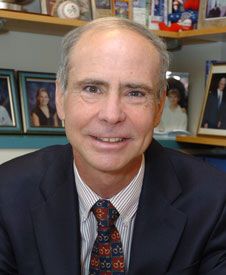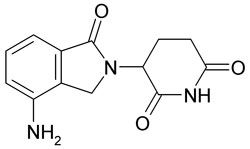Article
Revlimid Results for Multiple Myeloma Deemed "Historic"
Author(s):
Revlimid (lenalidomide) has demonstrated dramatic, long-term benefits as a second-line therapy for patients with multiple myeloma

Kenneth C. Anderson, MD
Revlimid (lenalidomide) has demonstrated dramatic, long-term benefits as a second-line therapy for patients with multiple myeloma, suggesting the drug can improve overall survival in a disease with a grim prognosis, according to results of a large, phase III trial announced during the 13th International Myeloma Workshop in Paris, France, this week.
“It’s really a historic moment for the treatment of our disease,” Kenneth C. Anderson, MD, program director and chief of the Division of Hematologic Neoplasias at the Dana-Farber Cancer Institute in Boston, Massachusetts, and a leading researcher in the study, said during a panel discussion on Thursday.
The drug, administered orally, nearly doubled the median time-to-progression (TTP) for patients with stage I/III multiple myeloma who took the capsules continuously as maintenance therapy after undergoing single autologous stem cell transplant. The results involved 568 patients who enrolled in the Cancer and Leukemia Group B (CALGB) trial from 2005 to 2009.
Patients in the Revlimid arm experienced a median TTP of 43.6 months versus 21.5 months for those in the placebo arm, researchers said in an abstract presented at the conference.
“It’s a tremendous advance; it is years’ worth of benefit,” Anderson said, noting that active cancer for patients with multiple myeloma can mean bone disease, kidney failure, and debilitating low blood counts.
In terms of adverse events, Anderson noted there has been concern that patients using Revlimid face the risk of developing a second cancer. He said, however, the incidence of second cancers appears to be similar to the rate that would be observed as a result of aging, and that the benefits of the drug far outweigh any risks. Revlimid carries a warning for hematologic toxicity, deep vein thrombosis, and pulmonary embolism.
Revlimid, first approved by the FDA in 2005, has been used successfully to treat patients with advanced multiple myeloma, Anderson noted. “What’s new today is [that] you can maintain those responses,” he said, adding the results would “change the paradigm by which we treat patients” with multiple myeloma.
Anderson described Revlimid as an immunomodulatory drug that works to stimulate the patient’s immune system while at the same time “targeting the tumor in the microenvironment” of the bone marrow. He said Celgene (now Celgene International Sàrl) developed Revlimid as a next-generation advance over thalidomide, which it also manufactures.

Putting the treatment of multiple myeloma into historical perspective, the panel members said approaches to treating the disease took a leap forward in 1998, when thalidomide became the first immunomodulatory drug used to treat the disease.
Previously, the standard treatment was high-dose chemotherapy, followed by stem cell rescue, said panel member Brian G.M. Durie, MD, who is chairman of the International Myeloma Foundation, national director for hematological malignancies at Aptium Oncology, and vice-chair of the Myeloma Committee of the Southwest Oncology Group.
He said thalidomide, along with Revlimid and Velcade (bortezomib), have become the “3 musketeers” of multiple myeloma treatment, enabling clinicians to follow autologous stem cell transplant with drug therapy.
The latest Revlimid results are “translating into improved survival for these patients,” he said. “…This sustained disease control can be very long-lasting. This is truly a new approach to cancer care.”
Now that novel agents are part of the treatment options, it will be important to prescribe adequate doses for individual patients, noted panel member Mario Boccadoro, MD, head of the Hematology section of the Oncology Division at the University of Torino in Italy. “We have to tailor the therapy to each patient, particularly the elderly patients, whom we have to modulate,” he said.
multiple myeloma is relatively uncommon in the United States, with approximately 20,000 new patients diagnosed last year, according to the American Cancer Society. Worldwide, the incidence of multiple myeloma is increasing and its footprint is growing broader, Durie said. It now affects at least 1 million people globally and is presenting in young patients, he added.









